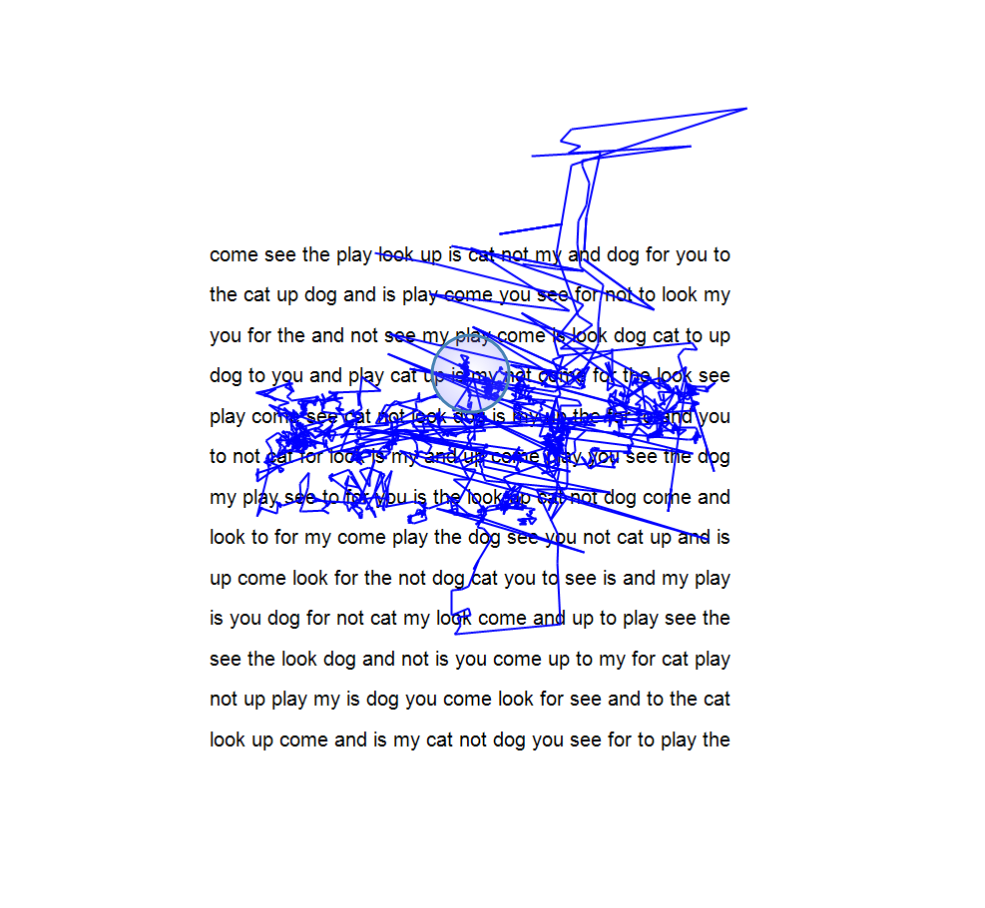What is Visual Stress?
An Overview
Visual stress is a perceptual processing condition that causes reading difficulties, headaches, and visual problems from exposure to patterns in text, such as lines of text.
How does it relate to Dyslexia ?
Visual stress is linked to Dyslexia and similar visual learning difficulties. Sufferers experience print distortion and fatigue when reading
Visual Stress under different names
Visual Stress is also known as Meares-Irlen syndrome or Scotopic sensitivity syndrome.
Visual Stress in varying degrees
The severity of these symptoms can vary from person to person with approximately 20% of the population suffering to some degree.
What causes Visual Stress?
The causes of Visual Stress are currently unknown; There is no scientific explanation for the symptoms, however, it is commonly agreed to be a visual-perceptual problem. Its perceptual nature means that it cannot be corrected with standard optical lenses as it is believed to stem from the visual cortex of the brain rather than being an eyesight issue.
A Solution
What can be done to help with Visual Stress?
The good news is Visual Stress symptoms can be helped with the use of coloured filters. When Visual Stress is suspected, a full assessment is recommended.
What happens during an Assessment?
During this assessment the optician will find the exact hue(colour) and saturation(darkness of colour) that will best relieve your symptoms, this is carried out using the Intuitive Colorimeter, this instrument can prescribe up to 100,000 colour combinations
How exactly do coloured lenses help?
Coloured lenses help with visual stress by altering the way light enters the eyes, which can reduce visual distortions and discomfort caused by certain patterns, lighting, or contrast levels—especially when reading.
Visual stress (often associated with Meares-Irlen Syndrome) is believed to be caused by hyperexcitability in the visual cortex, the part of the brain that processes visual information. Some people’s brains are overly sensitive to high-contrast patterns (like black text on white paper), which can lead to:
Blurring or movement of text
Headaches or eye strain
Difficulty concentrating
Skipping lines when reading
Coloured lenses or overlays work by changing the spectral composition of what you see. This reduces the overstimulation of the visual cortex and helps the brain process text more comfortably.
Clinical Eye Tracking
Clinical Eye Tracker
How Does the Clinical Eye Tracker Work?
The system features a compact bar positioned beneath a computer screen, equipped with three infrared cameras that track even the slightest eye movements at approximately 60 times per second. It supports a variety of test stimuli—not just text—allowing for diverse assessments. Advanced algorithms analyze the data to generate detailed statistics on reading performance, enabling direct comparisons under different visual conditions, such as with or without glasses or using colored overlays.
This technology is highly effective at detecting subtle visual issues that may lead to discomfort or reading difficulties. It's especially useful for individuals—both children and adults—who experience symptoms like poor concentration or headaches during screen use. It also provides clear, objective data on how eye movements impact visual performance in close-up tasks.
The Results Are In
Clinical Eye Tracking
Normal Eye Tracking
Eye Tracking of a Dyslexic Learner
Colorimetry
Colorimetry
What Is Colorimetry?
Colorimetry is the precise method of selecting tinted lenses from thousands of color combinations to reduce visual discomfort. Using the Intuitive Colorimeter, we identify the exact hue, saturation, and brightness that help ease symptoms of visual stress, migraines, and other neurological issues.
How It Works:
Assessment with a Colorimeter:
A special device (like the Intuitive Colorimeter) is used in a controlled lighting environment. It presents different colours, hues, and saturations to the individual.Patient Feedback:
As the colours are adjusted, the individual reports how the text looks—whether it becomes more stable, less blurry, or easier to focus on.Precise Tint Selection:
The exact shade that provides the most comfort is recorded. This tint can then be applied to spectacle lenses or overlays.
In Clinic
With guidance from our specialist optometrist, you'll go through a structured process to find the precision tint that best relieves your visual stress symptoms. The colorimetry assessment takes about 30 minutes and helps determine how effective a specific colour is in reducing your discomfort.
Binocular Vision Testing
Binocular vision screening
Binocular vision screening is a test that checks how well your eyes work together as a team. "Binocular" simply means "two eyes," so the screening looks at how both eyes align, focus, and move together to provide clear, single vision.
Why It's Important:
Even if each eye sees clearly on its own, problems can still occur when the brain tries to combine the two images into one. Issues with binocular vision can affect:
Reading and writing (skipping lines, losing place, slow reading)
Concentration (especially for near tasks)
Headaches or eye strain
Depth perception (judging distance, catching a ball)
Visual fatigue (especially in school-age children or people with dyslexia)
Common Binocular Vision Problems:
Convergence insufficiency: Trouble bringing the eyes together for close-up tasks
Strabismus (eye turn): One eye may point in a different direction
Suppression: The brain ignores input from one eye to avoid double vision
Amblyopia ("lazy eye"): One eye has weaker vision and may not work well with the other
What Happens During Screening:
A binocular vision screening is usually quick and non-invasive. It might include:
Eye tracking tests
Tests of near focus and convergence
Stereopsis (depth perception) checks
Cover/uncover tests to check eye alignment
If a problem is detected, a referral to an optometrist (especially a behavioral or developmental optometrist) may be recommended for a full vision assessment and possibly vision therapy.








